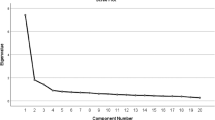Abstract
In an exploration of the social impacts of treatments for hyperactivity, two age groups (kindergarteners and first-graders vs. fourth- and fifth-graders) heard about a hyperactive child whose problem was treated either by an internal and controllable means (effort) or by an external and uncontrollable means (medication) and whose behavior either did or did not improve. The attributions and affective responses of both age groups were influenced by both the nature and the effectiveness of treatment, and there was only weak support for the hypothesis that younger children are more influenced by treatment outcome than older children are. However, older children, conforming to attribution theory predictions, held target children more accountabe for the success or failure of their own efforts than for the outcomes of medication, particularly valuing the child whose own efforts succeeded. By contrast, young children judged the child whose efforts failed as more worthy of pride and more likable than the child whose medication failed. Implications for peer acceptance of hyperactive children over the childhood years are discussed.
Similar content being viewed by others
References
Amirkhan, J. (1982). Expectancies and attributions for hyperactive and medicated hyperactive students.Journal of Abnormal Child Psychology, 10, 265–276.
Bosco, J. J., & Robin, S. S. (1980). Hyperkinesis: Prevalence and treatment. In C. K. Whalen & B. Henker (Eds.),Hyperactive children. The social ecology of identification and treatment (pp. 173–187). New York: Academic Press.
Harari, O., & Covington, M. V. (1981). Reactions to achievement behavior from a teacher and student perspective: A developmental analysis.American Journal of Educational Research, 18, 15–28.
Harris, B. (1977). Developmental differences in the attribution of responsibility.Developmental Psychology, 13, 257–265.
Henker, B., & Whalen, C. K. (1980). The many messages of medication: Hyperactive children's perceptions and attributions. In S. Salzinger, J. Antrobus, & J. Glick (Eds.),The ecosystem of the “sick” child (pp. 141–166). New York: Academic Press.
Karniol, R. (1978). Children's use of intention cues in evaluating behavior.Psychological Bulletin, 85, 76–85.
Milich, R., & Landau, S. (1982). Socialization and peer relations in hyperactive children. In K. D. Gadow & I. Bialer (Eds.),Advances in learning and behavior disabilities (Vol. 1, pp. 283–339). Greenwich, Connecticut: JAI Press.
Nicholls, J. G. (1978). The development of the concepts of effort and ability, perceptions of academic attainment, and the understanding that difficult tasks require more ability.Child Development, 49, 800–814.
Pelham, W. E., & Bender, M. E. (1982). Peer relationships in hyperactive children: Description and treatment. In K. D. Gadow & I. Bialer (Eds.),Advances in learning and behavior disabilities (Vol. 1, pp. 365–436). Greenwich, Connecticut: JAI Press.
Piaget, J. (1948).The moral judgment of the child. Glencoe, Illinois: Free Press. (Original work published 1932)
Rosenholtz, S. J., & Simpson, C. (1984). The formation of ability conceptions: Developmental trend or social construction?Review of Educational Research, 54, 31–63.
Shaw, M. E., & Sulzer, J. L. (1964). An empirical test of Heider's levels in attribution of responsibility.Journal of Abnormal and Social Psychology, 69, 39–46.
Stipek, D. J. (1984). The development of achievement motivation. In R. Ames & C. Ames (Eds.),Research on motivation in education (Vol. 1, pp. 145–174). Orlando, Florida: Academic Press.
Weiner, B., & Graham, S. (1984). An attributional approach to emotional development. In C. E. Izard, J. Kagan, & R. B. Zajonc (Eds.),Emotions, cognition, and behavior (pp. 167–191). Cambridge, England: Cambridge University Press.
Weiner, B., Graham, S., Stern, P., & Lawson, M. E. (1982). Using affective cues to infer causal thoughts.Developmental Psychology, 18, 278–286.
Weiner, B., Kun, A., & Benesh-Weiner, M. (1980). The development of mastery, emotions, and morality from an attributional perspective. In W. A. Collins (Ed.)Minnesota symposia on child psychology (Vol. 13, pp. 103–129). Hillsdale, New Jersey: Erlbaum.
Whalen, C. K., & Henker, B. (1976). Psychostimulants and children: A review and analysis.Psychological Bulletin, 83, 1113–1130.
Whalen, C. K., Henker, B., Dotemoto, S., & Hinshaw, S. P. (1983). Child and adolescent perceptions of normal and atypical peers.Child Development, 54, 1588–1598.
Author information
Authors and Affiliations
Rights and permissions
About this article
Cite this article
Sigelman, C.K., Shorokey, J.J. Effects of treatments and their outcomes on peer perceptions of a hyperactive child. J Abnorm Child Psychol 14, 397–410 (1986). https://doi.org/10.1007/BF00915434
Revised:
Issue Date:
DOI: https://doi.org/10.1007/BF00915434




